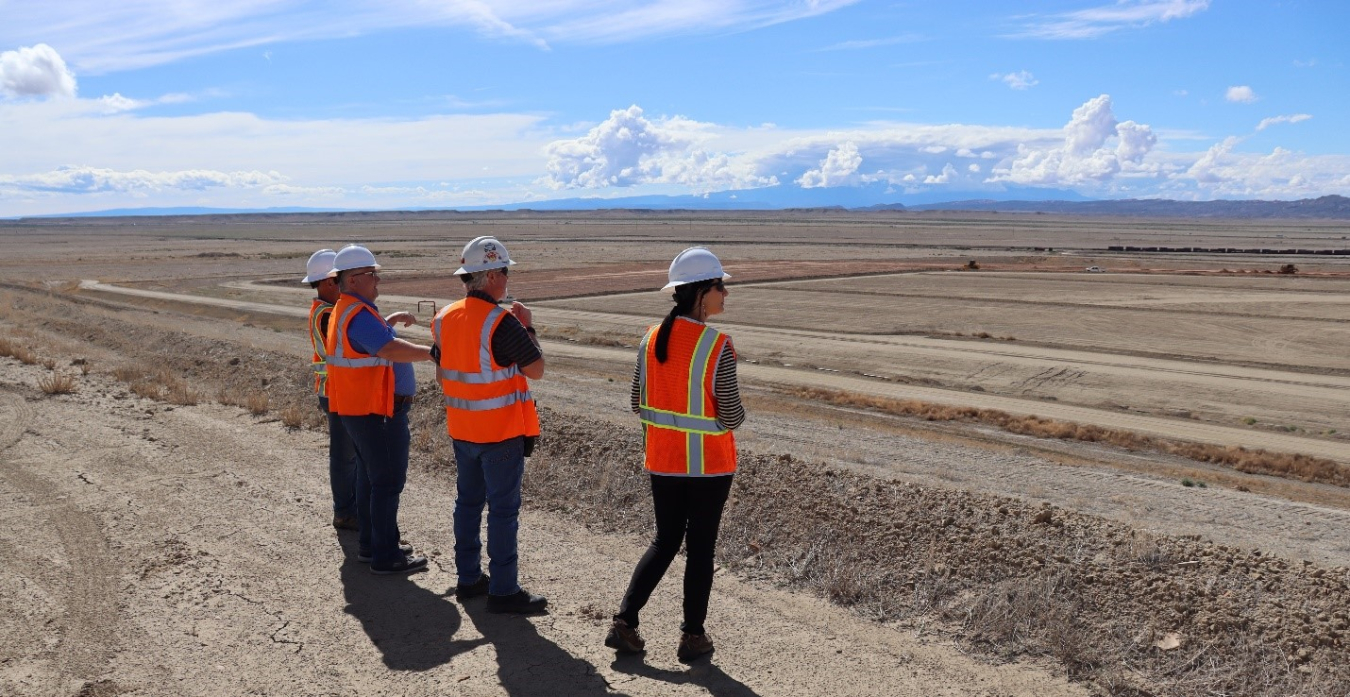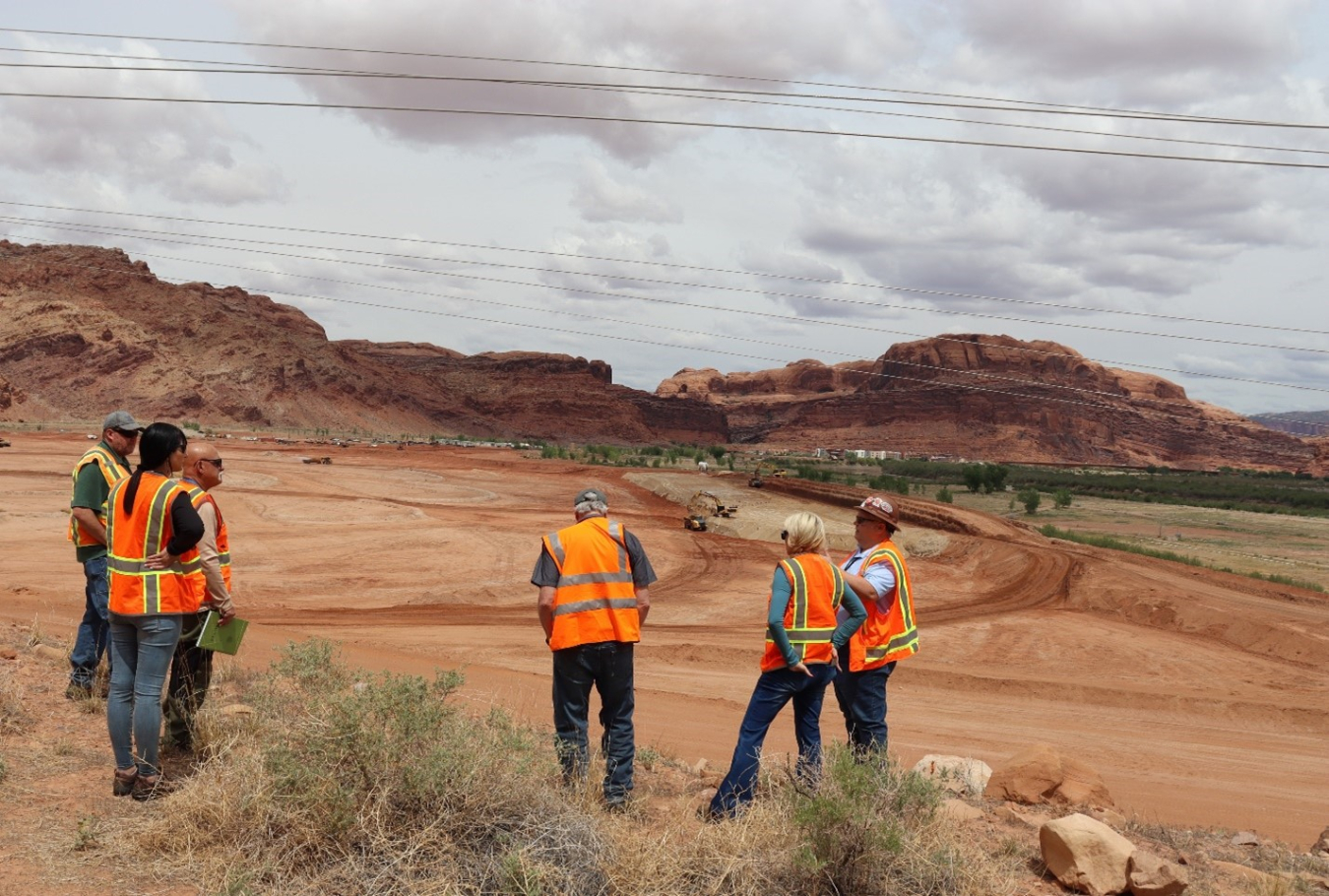Representatives from the Oak Ridge Institute for Science and Education recently made their first of several visits to the Moab Uranium Mill Tailings Remedial Action Project.
Office of Environmental Management
May 27, 2025Oak Ridge Institute for Science and Education representatives are joined by Moab Uranium Mill Tailings Remedial Action Project personnel as they view the Moab Project’s disposal cell near Crescent Junction, Utah.
MOAB, Utah ― Representatives from the Oak Ridge Institute for Science and Education (ORISE) recently made their first of several visits to the Moab Uranium Mill Tailings Remedial Action Project to independently verify the U.S. Department of Energy (DOE) Office of Environmental Management's (EM) environmental cleanup for both of the Moab Project’s working sites.
Located in Oak Ridge, Tennessee, ORISE is a DOE asset managed by the Oak Ridge Associated Universities. The institute has been providing independent verification for DOE, the U.S. Nuclear Regulatory Commission and others for more than 40 years.
“Having ORISE perform independent verification of our sites’ cleanup is essential, especially considering the community’s desire for ownership of the Moab property once cleanup is complete,” said EM Physical Scientist Kenny Schafer, who oversees the project’s Radiological Verification Program.
The City of Moab and Grand County, Utah, have joined together to request ownership of the Moab Project site property. Their hope is to build an outdoor park and recreation area on the land, which is adjacent to the Colorado River.
Oak Ridge Institute for Science and Education and Moab Uranium Mill Tailings Remedial Action Project personnel view the Moab Project site from an overlook along State Route 279.
Uranium Reduction Company constructed the Moab mill in 1956 and operated it until 1962, when the assets were sold to Atlas Minerals Corporation. Uranium concentrate was the milling product. Known as “yellowcake,” it was sold to the U.S. Atomic Energy Commission, a predecessor agency to DOE, through December 1970 for use in national defense programs.
During its years of operation, the mill processed an average of about 1,400 tons of ore a day, resulting in an estimated 16-million-ton mill tailings pile. Atlas declared bankruptcy in 1988, and responsibility for the cleanup was transferred to DOE in 2001 with enactment of the Floyd D. Spence National Defense Authorization Act.
ORISE’s work with the Moab Project will take place throughout the remaining cleanup and closure of both sites. The mill tailings pile is located in Moab, and the disposal cell for the Moab Project is located near Crescent Junction, Utah.
EM expects to complete removal of contaminated material, including the pile, sub-pile and off-pile areas in 2027, and site closure in 2029. Sub-pile refers to the contaminated soil beneath the surface tailings pile, and off-pile refers to the additional contaminated soil and debris adjacent to the surface pile.
The cleanup program also anticipates DOE’s Office of Legacy Management will perform ongoing groundwater monitoring due to the Moab Project’s proximity to the Colorado River. That monitoring would follow the completion of EM’s Moab Project cleanup mission.
-Contributor: Barbara Michel
To receive the latest news and updates about the Office of Environmental Management, submit your e-mail address.



